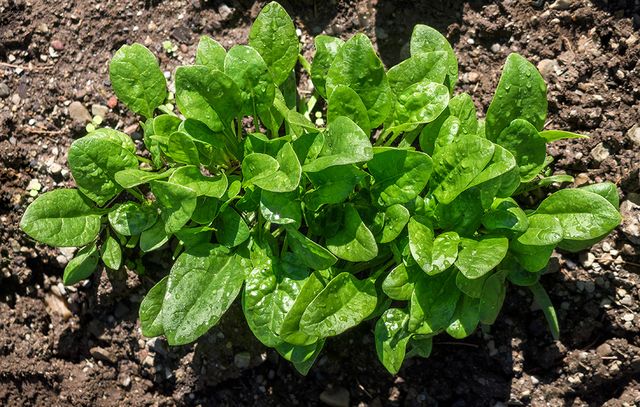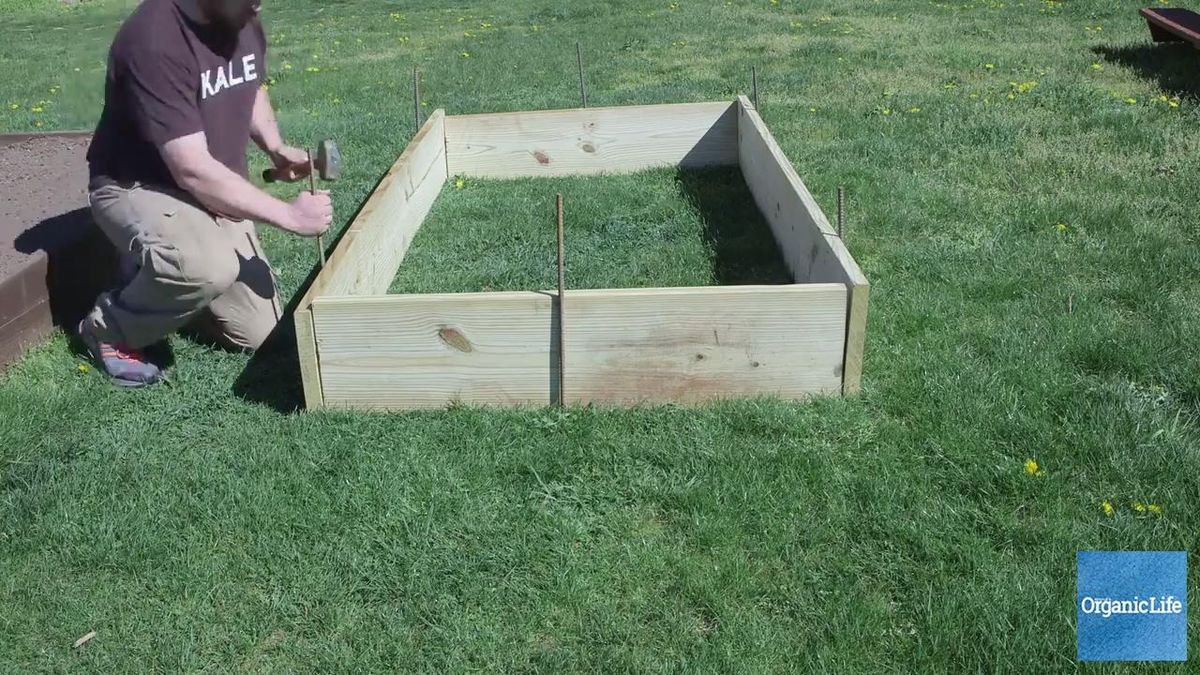Spinach is one of the most satisfying cool-weather crops to grow, producing large yields of vitamin-rich, dark green leaves that are excellent for salads and for cooking. Since both hot weather and long days trigger spinach to bolt (send up a seed stalk) quickly, the secret to success with this crop is to start sowing seeds as soon as possible in spring; to make small, frequent plantings during late spring and summer; and to concentrate on fall as the season for the main crop.
Planting
Spinach does best when growing in moist, nitrogen-rich soil. Spinach plants form a deep taproot; for best growth, loosen the soil at least 1 foot deep before planting.
Sow spinach seed as early as six weeks before the last frost or as soon as you can work the soil. Prepare the soil the previous autumn, and you'll be able to drop the seeds in barely thawed ground come spring. In areas with a long, cool spring, make successive plantings every 10 days until mid-May.
In warm climates, plant spinach in the shade of tall crops such as corn or beans. The young plants will be spared the hottest sun and be ready for harvest in fall or winter. Using cold frames or heavyweight row covers, you can grow spinach all winter in many parts of the country. In colder regions, try planting in fall (October) and protecting the young plants through winter for a spring harvest. In regions where the soil doesn’t freeze, try planting spinach in February for a March harvest.
Spinach seed doesn’t store well, so buy fresh seeds every year. Sow them one half inch deep and two inches apart in beds or rows. If the weather isn’t extremely cold, seeds will germinate in five to nine days. Spinach produces beautifully in cool fall conditions, but it’s tricky to persuade the seed to germinate in the hot conditions of late summer. Sow seed heavily, because the germination rate drops to about 50% in warm weather, and water the seed beds frequently — even twice a day — because watering helps to cool the soil.
We love planting spinach in raised beds — here's our favorite design for building one:
Growing Guidelines
Overcrowding stunts growth and encourages plants to go to seed. To avoid crowding, thin seedlings to four to six inches apart once they have at least two true leaves. Fertilize with compost tea or fish emulsion when the plants have four true leaves.
Since cultivating or hand pulling weeds can harm spinach roots, it’s best to spread a light mulch of hay, straw, or grass clippings along the rows to suppress weeds instead. Water stress will encourage plants to bolt, so provide enough water to keep the soil moist but not soggy. Cover the crop with shade cloth if the temperature goes above 80 degrees.
Troubleshooting
Since most spinach grows in very cool weather, pests are usually not a problem. Leafminer larvae can burrow inside leaves and produce tan patches. Prevent leafminer problems by keeping your crop covered with floating row cover. For unprotected plants, remove and destroy affected leaves to prevent adult flies from multiplying and further affecting the crop. Slugs also feed on spinach.
Spinach blight, a virus spread by aphids, causes yellow leaves and stunted plants. Downy mildew, which appears as yellow spots on leaf surfaces and mold on the undersides, occurs during very wet weather. Reduce the spread of disease spores by not working around wet plants. Avoid both of these diseases by planting resistant cultivars.
Harvesting
In six to eight weeks you can start harvesting from any plant that has at least six three or four inch long leaves. Carefully cutting the outside leaves will extend the plants’ productivity, particularly with fall crops. Harvest the entire crop at the first sign of bolting by using a sharp knife to cut through the main stem just below the soil surface.













